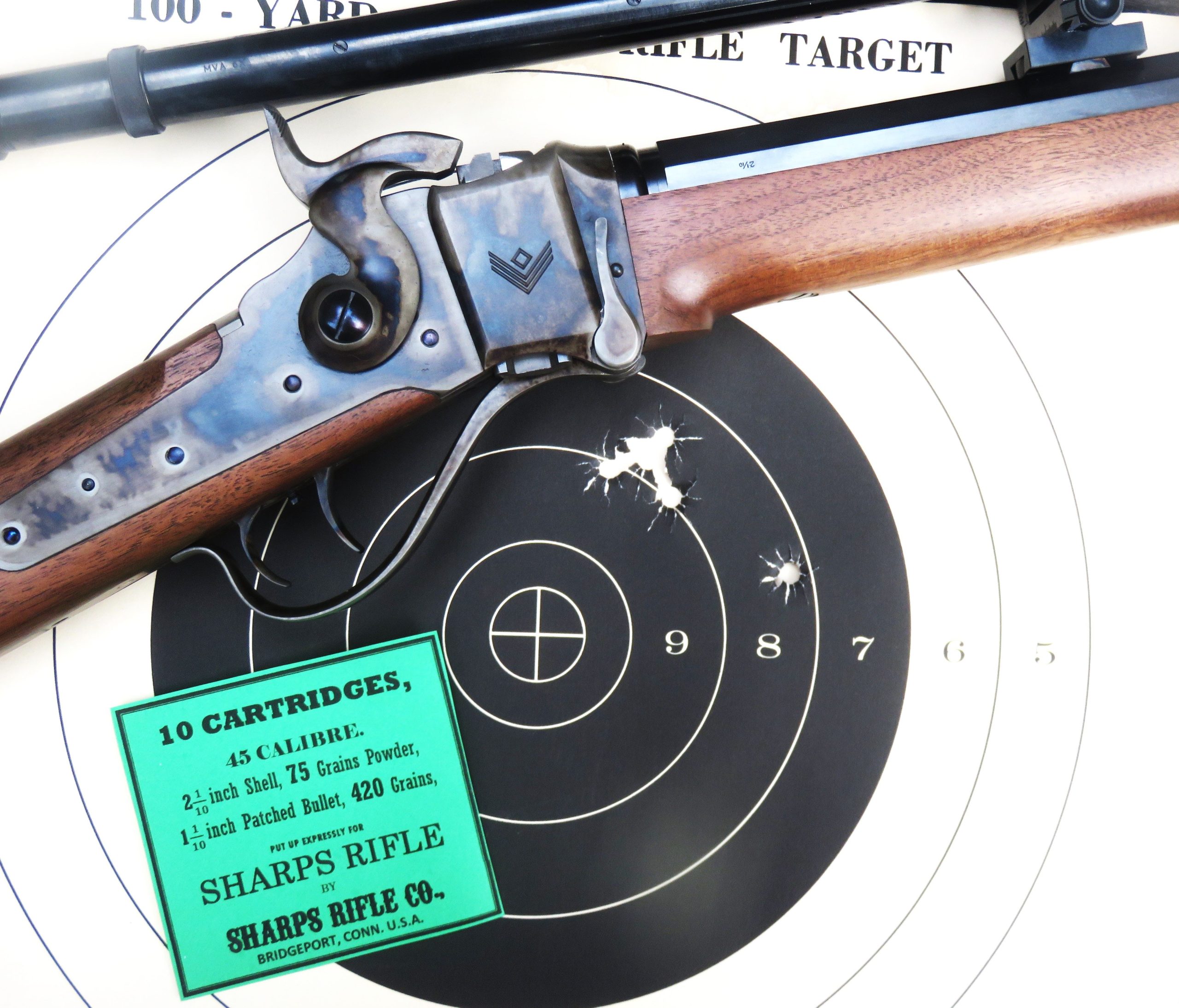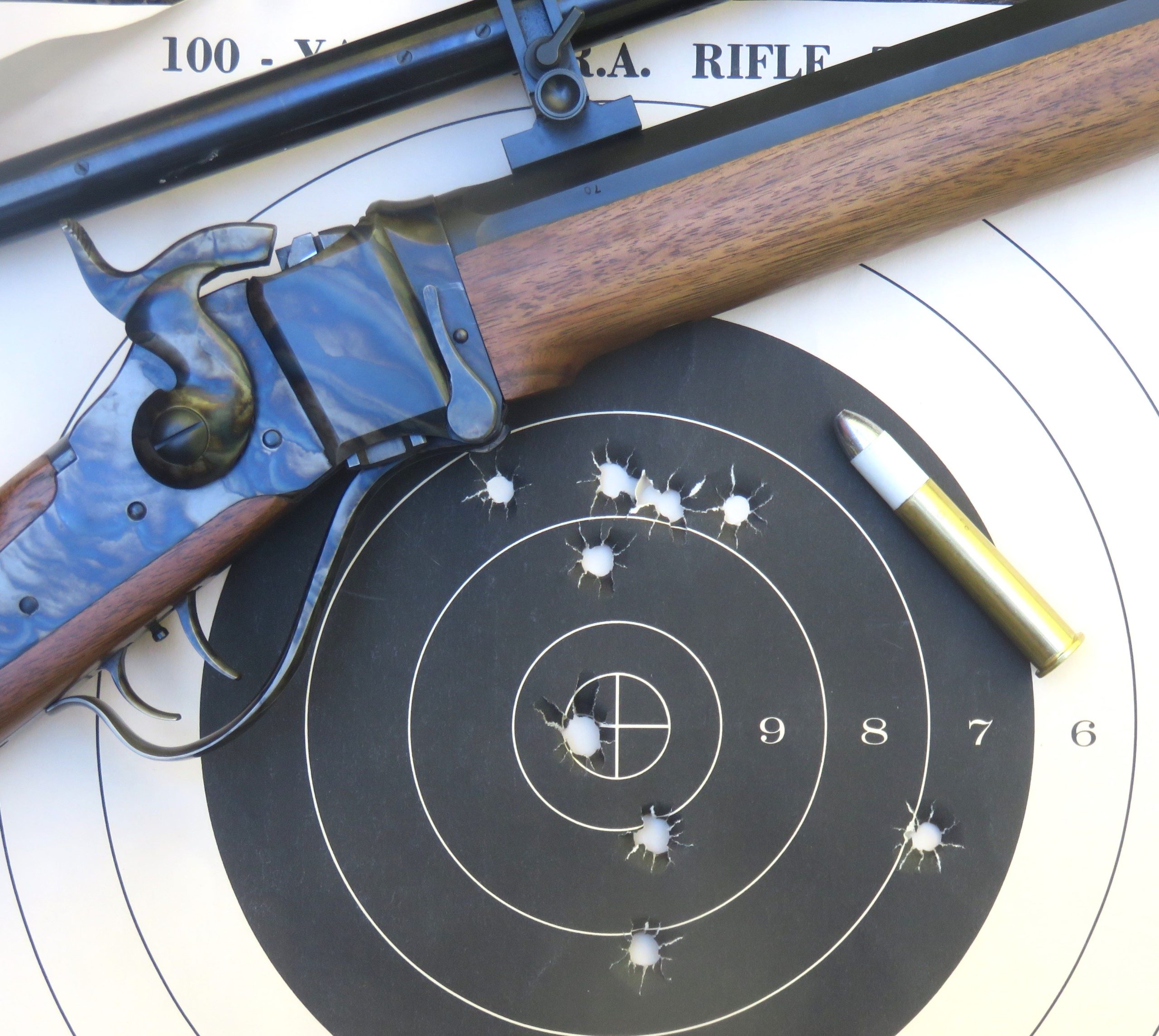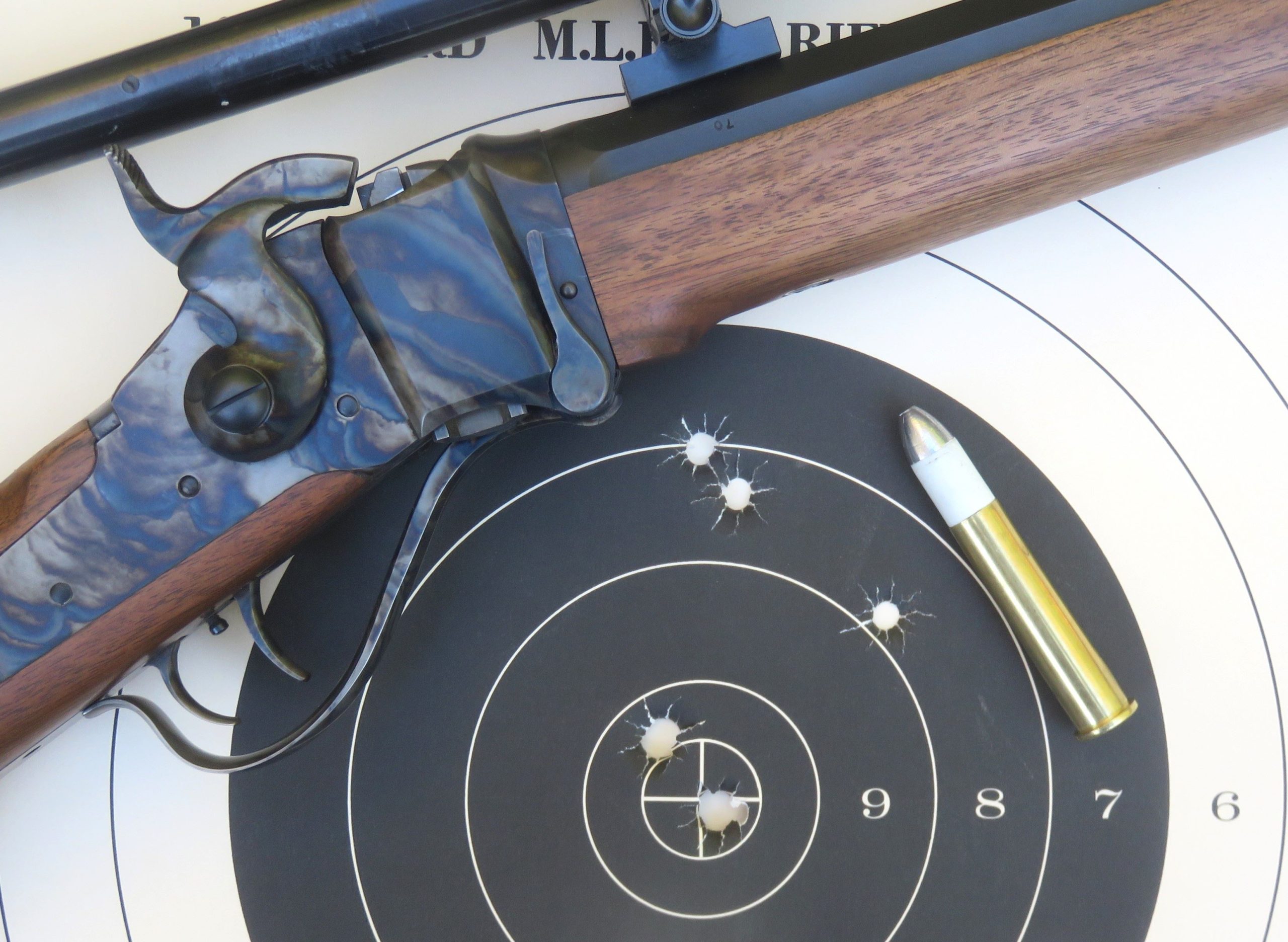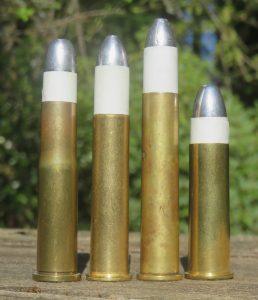
By Mike Nesbitt | Contributing Editor
Most of my comments about paper patched bullets have been in the general sense, at least more or less.
Now, however, I want to get more specific because I’ve been busy selecting the rifle and the load which I’ll use in the upcoming Paper Patch Match with the Black River Buffalo Runners. Actually, I thought I had made my selection of a rifle and the load already decided upon but no, things happened which made me change my mind.
The rifle I had planned on using was my favorite .50-70 Sharps, the gun I like to call “Moonbeam.” That would still be a very good choice. And I thought that Mike Moran, often a favored shooting partner, would also use his .50-70 Sharps in the coming Paper Patch Match. Then I learned that Mike would be shooting his .45-70 and his reason for making that choice was quite simple, he doesn’t have a mold to make .50 caliber paper patched bullets. That could be fixed, I’d lend him a bullet mold. In fact, I do believe the bullet mold he’s using to make his .45 caliber bullets is mine anyway… But with Mike preparing to use his .45-70, I was influenced to take another look at my .45-70, that’s my Sharps with the #1 ½ Heavy 28-inch barrel, a Bridgeport model by C. Sharps Arms, equipped with the MVA 10X scope. We might say the more I looked at it, the better it looked…
But preparations with the .50-70 had been made with good results. The load I intended to use featured a 473-grain paper patch bullet, cast from a KAL adjustable mold, adjusted to cast a good copy of the old Sharps bullet for their .50-90, over 72 grains of Olde Eynsford 2F powder. That is a “stomping” load, which makes my .50-70 Sharps bellow like a buffalo gun. And it was accurate enough that I would use it in the match, or as a hunting load, should such a chance occur. In fact, while I had decided to use the .45-70 instead, the .50-70 rifle and its prepared ammo was held back in reserve, just in case it might be needed.
The paper I use for patching bullets is from Buffalo Arms Company, commonly called 9-pound “onion skin” paper. “BACO” sells this paper in 8 ½” X 11” sheets, .002” thick, 100 sheets for about $17.00. Two wraps with this paper will increase the diameter of the paper patch bullet about .006″-.007″ depending on method of wrapping. I wrap the bullets with wet patches and that produces a tighter fit with the patch. To see more or to place an order, visit their web site at buffaloarms.com.
And the load I’ll use in the .45-70 was found almost by accident. I was playing with various loads to try in the Ryan Rifle, which I have already reported on. One of those loads used the 500-grain paper patched bullets, cast from a Tom Ballard mold (which I treasure) over 65 grains of Swiss 1 ½ Fg powder. That was tried just to see if it would work and it did work, it worked very well…

Following that, the same loading was tried in my own scope-sighted Sharps in .45-70 and the good work continued. It continued well enough that I’ve been using that paper patched load ever since and it might become the standard loading for use in that rifle.
In addition to the bullet and the powder charge, the powder is compressed enough to make room for lube and the tail end of the bullet. Most of the bullet hangs out in front of the cartridge case, as you can see in the photos, so the tapered Ballard bullet enters the barrel’s rifling when the cartridge is chambered. One .060” Walters’ veggie wad is used over the powder, applied when the powder is compressed, and that is followed by a 1/8” or thicker “cookie” of bullet lube, mainly BPC Lube from C. Sharps Arms, and then the bullet is seated over the lube with no additional wad between the lube and the bullet. This bullet has a cupped base and when the cartridge is fired, the lube beneath the bullet fills that cupped base allowing hydraulics to act and assist in expanding the base of the bullet to completely fill the rifling grooves in the barrel.

For those who are curious about velocities, this load with the 500-grain bullets over 65 grains of the Swiss powder was speed checked at an average of 1,188 feet per second out of my rifle’s 28-inch barrel. That’s right in the ballpark for a .45-70 shooting 500-grain bullets with less than 70 grains of powder.
Remember that the .45-70 is on the small side when compared to most Sharps cartridges.
My first good try with this load in my own rifle included just ten shots fired at a 100-yard target and the results pleased me very much. To look at that target, you might think the shots are scattered, which some of them are, but they all printed in the black and the “score,” if that target was turned in at a match, would be 86-X out of the 100 possible. (I’ve turned in several targets that didn’t score as high!) But I want to point out, if you’ll look at the picture, how six of those ten shots all clustered nicely at 12 o’clock in the black. That makes a very good group. The lower shots, including the shot through the X, were some of the early shots and I might not have been as “settled-in” as I should have been. And, my concluding shot was the 8 (mostly in the 7-ring) out at 4 o’clock. That was all my fault and, while I hate to do so, I must say that the shot went right where the rifle was aimed when it discharged. (I should have paused, taken another breath, and gotten back “in the groove” before letting that one go.) That’s the rundown on the 100-yard target.

But the Paper Patch Match has targets at both 100 and 200 yards. And even as this was being written, I had yet to try a target, and did not have a sight setting, for the 200-yard distance. That had to be taken care of…
At the same time, Mike Moran, who had been cavorting around in Hawaii, had to shoot his Paper Patch Match targets early because of another commitment on the actual day of the match. This is easy to do, and it only requires a witness to sign and hold the targets so they can be “turned in” on the day of the match, and scored with the other targets. We would shoot together, with Moran shooting for score and with me looking for a 200-yard sight setting.
So, my writing was interrupted by loading just ten more of the 500-grain paper patched bullets over the 65-grain charge of Swiss 1 ½ Fg powder to be tried at 200 yards. What that led to was almost an adventure and the shooting, which I will certainly comment on, heightened my confidence in this paper patched load.
First, just to check the sight setting at 100 yards, another target was posted at that distance. My first shot just clipped the X-ring at 10 or 11 o’clock. That target is included in the photos so you should be able to see what I am talking about. Upon seeing the hit from that first shot through the rifle’s scope, I cheered and announced that maybe I should just quit right there and go home. But, instead, more shots were fired. The second shot almost centered the X-ring, and I was delighted. Then three more shots were fired at the 100-yard target and those printed as three 8s, with two of them near the 12 o’clock position.
Why those last three shots went higher is something I don’t understand just yet. Even so, I was very pleased with the shooting and then guessed at a sight adjustment to begin shooting at the 200-yard target. My first shot at 200 yards scored a 10, hitting at 1 o’clock. That delighted me, I had apparently found my 200-yard sight setting almost without really trying.

The group size in this 5-shot target is the same as the length of the cartridge.
A couple of more shots were fired at the 200-yard target and that’s when something happened. While just preparing to aim for one of those shots, I mistakenly “set” the wrong trigger and, of course, the rifle fired. That was the second time I’ve done such a thing and the very first time I had done that was only last week! My sincere hope is that this isn’t the beginning of a new phase of carelessness or something in my shooting… Of course, that shot was a complete miss.
Following that, with setting the wrong trigger weighing heavily on my mind, I made another mistake. I fired a shot at the wrong target… Well, all of the targets posted at 200 yards did look alike… This means I had wasted two of those valuable ten rounds which I had loaded mainly to find a 200-yard sight setting. On the positive side, my three hits on the 200-yard target were all nicely in the black and that 200-yard sight setting is now written in my sight book.
Now I’m prepared for the Paper Patch Match with the exception that I must, and rather quickly, prepare another 30 rounds of that load with the 65 grains of Swiss 1 ½ Fg powder under the 500-grain bullets. Those bullets are already cast, out of 30-1 alloy also from Buffalo Arms Company, patched and waiting. In addition to that, the powder measure is already set. The 30 rounds will be used for the Paper Patch Match with 10 shots at 100 yards, another 10 shots at 200 yards, plus 10 more shots to be used in the after-match which will use gongs, silhouettes, at both of those same distances. Most likely, a report shall follow.




